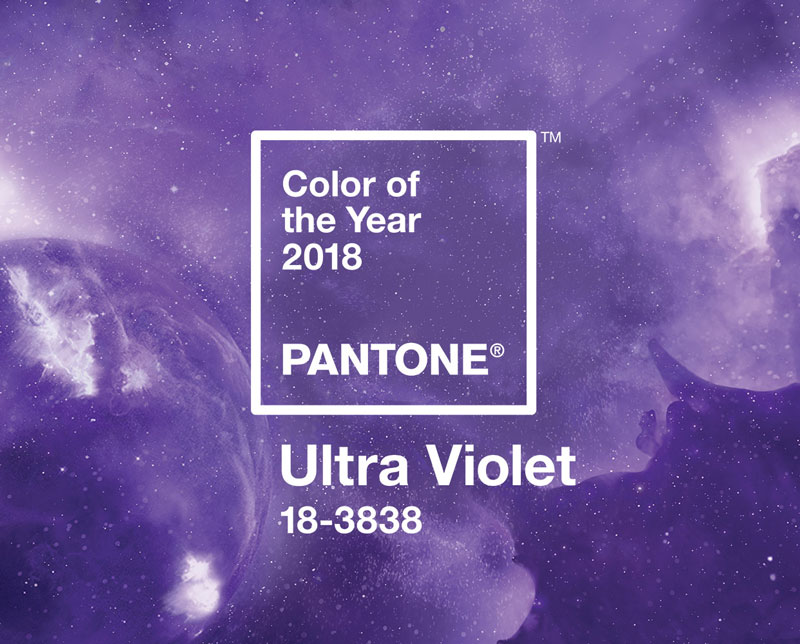Color of the Year
Meet Ultra Violet 18-3838, the 2018 Pantone Color of the Year that is “symbolic of counterculture, unconventionality, and artistic brilliance.”[1] Claude Monet, Queen Victoria, and a galaxy far, far away are all associated with this enigmatic color - not to be confused with ultraviolet, a light on the spectrum not visible to the human eye. While the color of the year typically mirrors current trends in fashion, interiors, and industrial design, this year’s thoughtful shade is “a true reflection of what’s needed in our world today,”[2] according to Laurie Pressman, Vice President of the Pantone Color Institute. This selection marks a departure for the famed color theorists – a future prediction rather than a present-day commentary.
But before ultra violet “lights the way to what is yet to come,”[3] where has the inventive shade taken us before? Purple has quite the storied history, from Julius Caesar demanding heliotrope-hued togas after seeing Cleopatra’s purple palace[4], to a certain pop star’s favorite shade of rain. It can represent royalty and wealth, spirituality and meditation, the universe and discovery, or technology and development. It is an important color in traditional mourning attire, as it marks the transition into ‘half-mourning,’ when certain hues such as mauve, grey, and cream are introduced back into the black wardrobe.
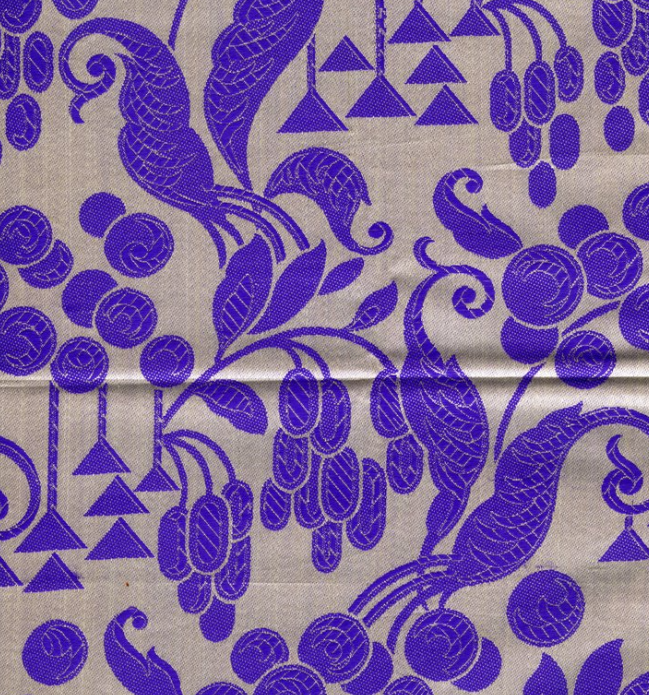
Textile swatch, 1880-1910 Silk jacquard Gift of Robert Fortunoff 99.274.222
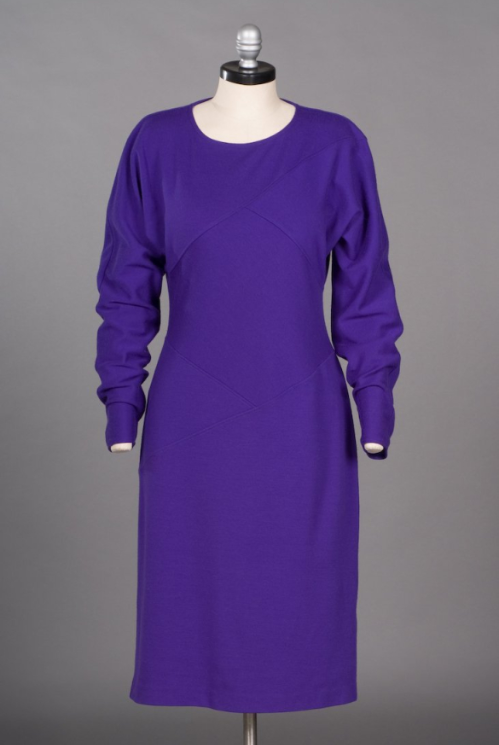
Missoni dress, c. 1985 Wool Gift of Jo Holzman S2006.871.7
The pigment had its origins in the first millennium B.C. in the form of purpura, or Tyrian purple, created by collecting the glandular mucus of tiny shellfish called murex.[5] As it was incredibly labor intensive and expensive to make the color (hundreds of thousands of mollusks were needed to dye a single garment), purple was restricted to royalty and the extremely wealthy for centuries, at times regulated by strict sumptuary laws. Purple did not become egalitarian until the mid-19th century, when a young chemist stumbled on the formula for synthetic color dye. William Henry Perkin was attempting to synthesize quinine from coal tar as a treatment for Malaria when he noticed the by-product of his experiments was an attractive shade of purple – a discovery that would revolutionize fashion.[6]
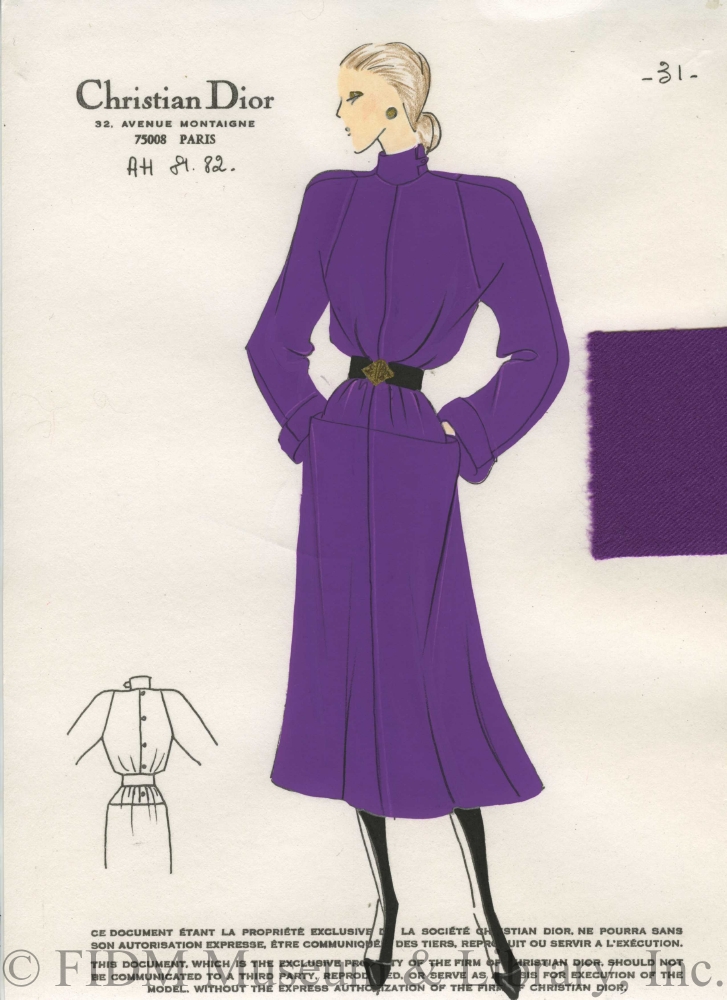 Marc Bohan for Christian Dior Croquis Autumn/Winter 1981-1982 Gift of Betsy Bloomingdale SC2009.116.213
Marc Bohan for Christian Dior Croquis Autumn/Winter 1981-1982 Gift of Betsy Bloomingdale SC2009.116.213
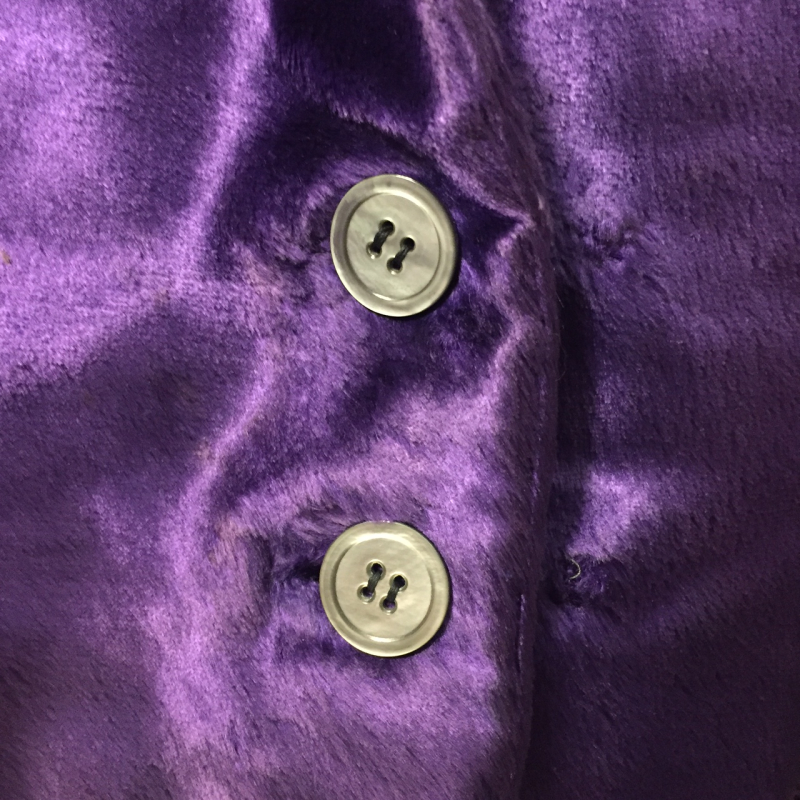 Rudi Gernreich jacket, c. 1963-1964 Plush velvet FIDM Museum Purchase G2009.5.79
Rudi Gernreich jacket, c. 1963-1964 Plush velvet FIDM Museum Purchase G2009.5.79
In addition to transforming the textile industry, Perkin’s 1856 innovation of aniline dyes prompted what English journal Punch satirically referred to as “Mauve Measles” – the spread of an infectious addiction to newly available purple ribbons, gowns, bonnets, gloves, fans, and slippers.[7] Empress Eugénie, wife of Napoleon III, went wild for ‘Perkins purple’ in 1857, and Queen Victoria heightened the mania when she wore a velvet mauve gown to her daughter’s wedding in 1858.[8] Pale shades of purple were later the staple of Impressionist painters, who believed they had finally found the color of the atmosphere.[9] The Impressionists used violet rather than black to represent shadows, and were so liberal in their use of the shade that critics accused the group of “violettomania.”[10]
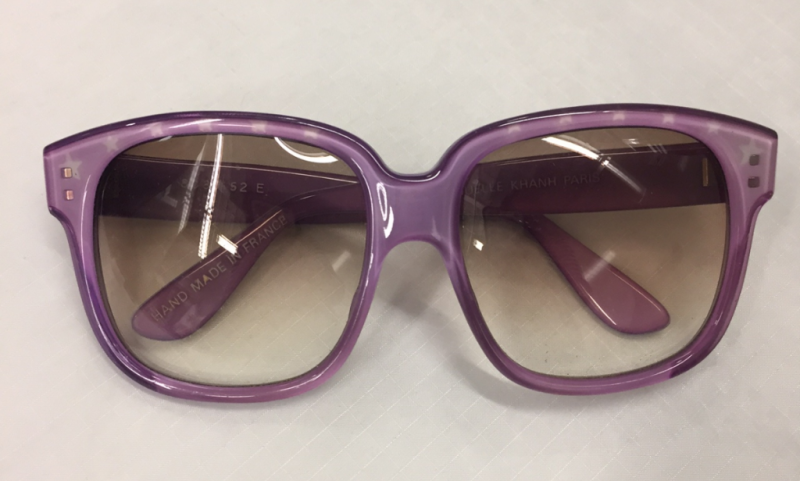 Emmanuelle Khanh sunglasses, 1975-1985 Plastic Gift of Dorothy Washington Sorensen 2010.1110.104AB
Emmanuelle Khanh sunglasses, 1975-1985 Plastic Gift of Dorothy Washington Sorensen 2010.1110.104AB
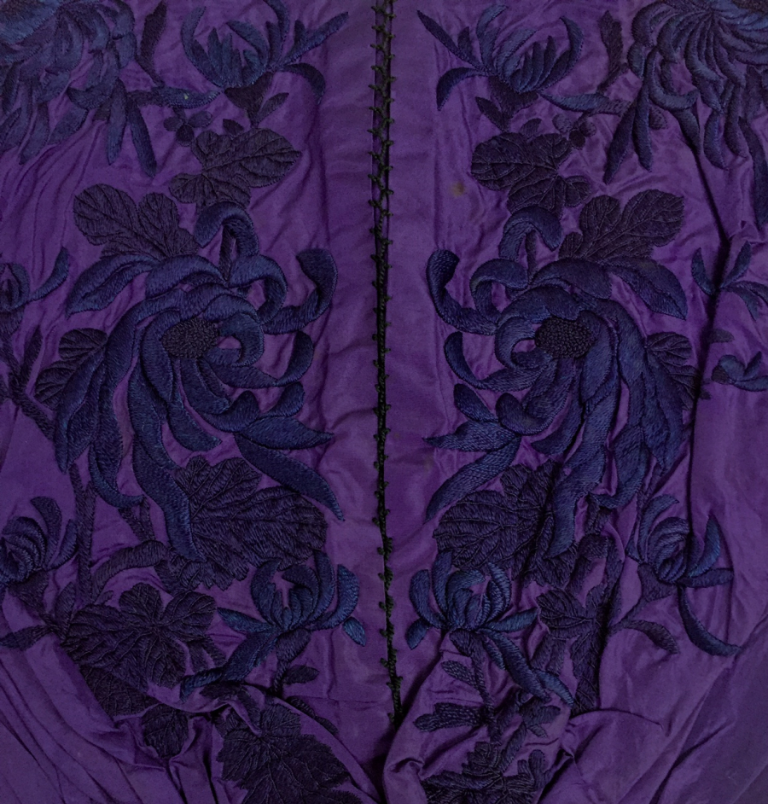 Blouse, 1909-1911 Silk taffeta Gift of Marie-Jo Dulade-Coclet 2011.1154.2
Blouse, 1909-1911 Silk taffeta Gift of Marie-Jo Dulade-Coclet 2011.1154.2
Artists’ devotion to purple did not wane in the 20th century. Fauvists such as Henri Mattise embraced violet in their brightly contrasting canvases. Georges Lepape used saturated shades of purple in his striking pochoir illustrations of Paul Poiret’s fashions. Other creatives viewed violet as a gateway to imagination; Frank Lloyd Wright reportedly wore a purple cape to foster inspiration.[11] The psychedelic counter-culture of the 1960s and 70s embraced ultra violet with black lights and hallucinogenics – the color is often seen in the era's posters and album covers, including Jimi Hendrix's 1970 hit single Purple Haze. Vogue paid homage to the popular hue with a 1994 fashion editorial of the same name starring Kate Moss.
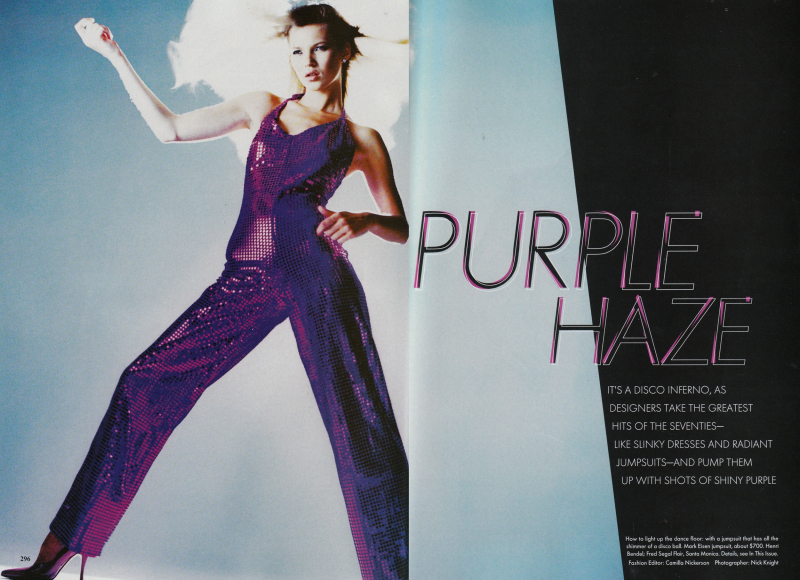 Vogue, November 1994, FIDM Museum Special Collections.
Vogue, November 1994, FIDM Museum Special Collections.
 Textile swatch, 1910-1940 Silk brocade Gift of Robert Fortunoff 99.274.192
Textile swatch, 1910-1940 Silk brocade Gift of Robert Fortunoff 99.274.192
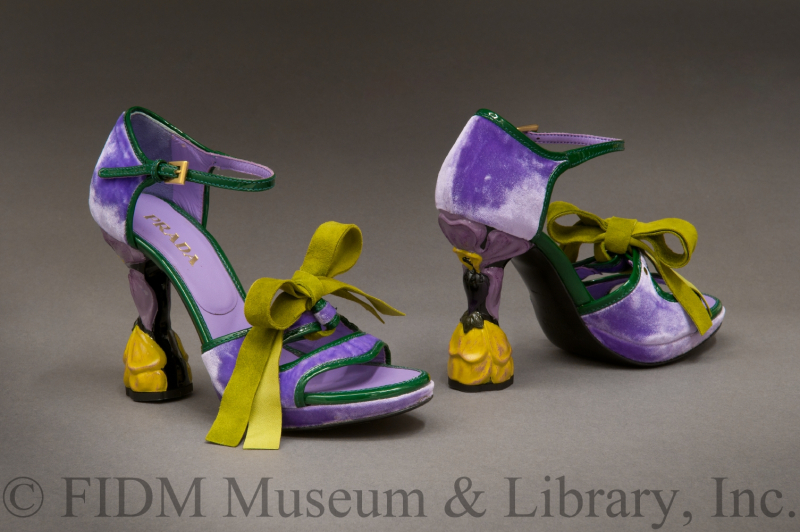 Prada heels, Spring/Summer 2008 Velvet, suede, plastic, cotton, brass, leather FIDM Museum Purchase 2009.5.11A-F
Prada heels, Spring/Summer 2008 Velvet, suede, plastic, cotton, brass, leather FIDM Museum Purchase 2009.5.11A-F
Perhaps sensing our society’s need for a positive year ahead, Pantone’s color choice “communicates originality, ingenuity, and visionary thinking that points us toward the future.”[12] Here’s to more invigorating violet fashion choices in 2018!
People Girl's Dress, c. 1897 Crepe paper Gift of Steven Porterfield 2007.897.3
Girl's Dress, c. 1897 Crepe paper Gift of Steven Porterfield 2007.897.3
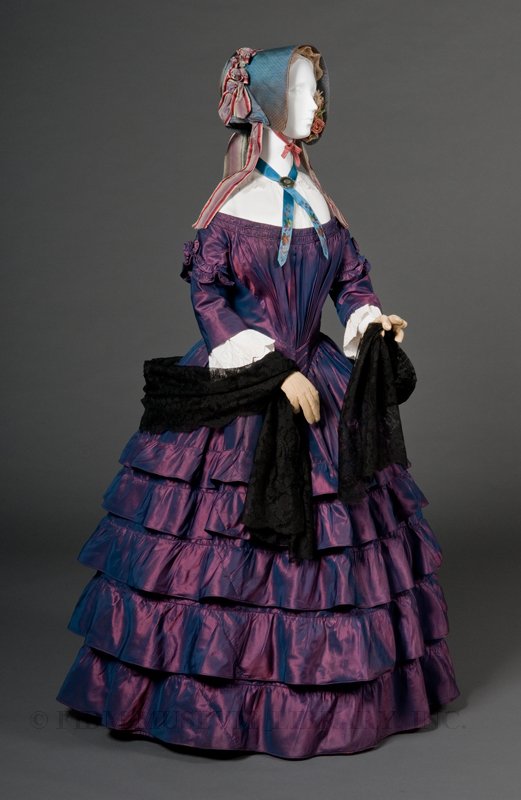
Day Gown, 1845-1846 Silk taffeta FIDM Museum Purchase 2008.5.39A-C
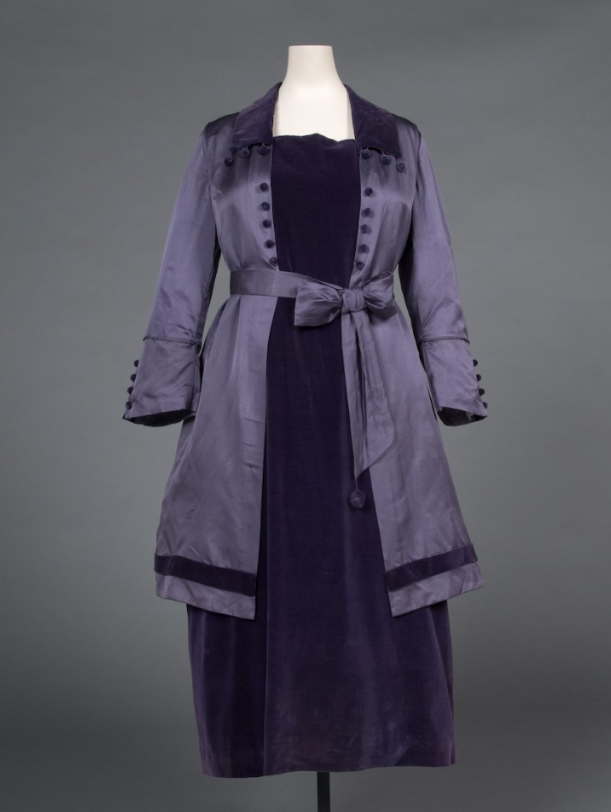
Dress, c. 1915-1917 Silk/Cotton Gift of the Manlove Family 2006.870.55
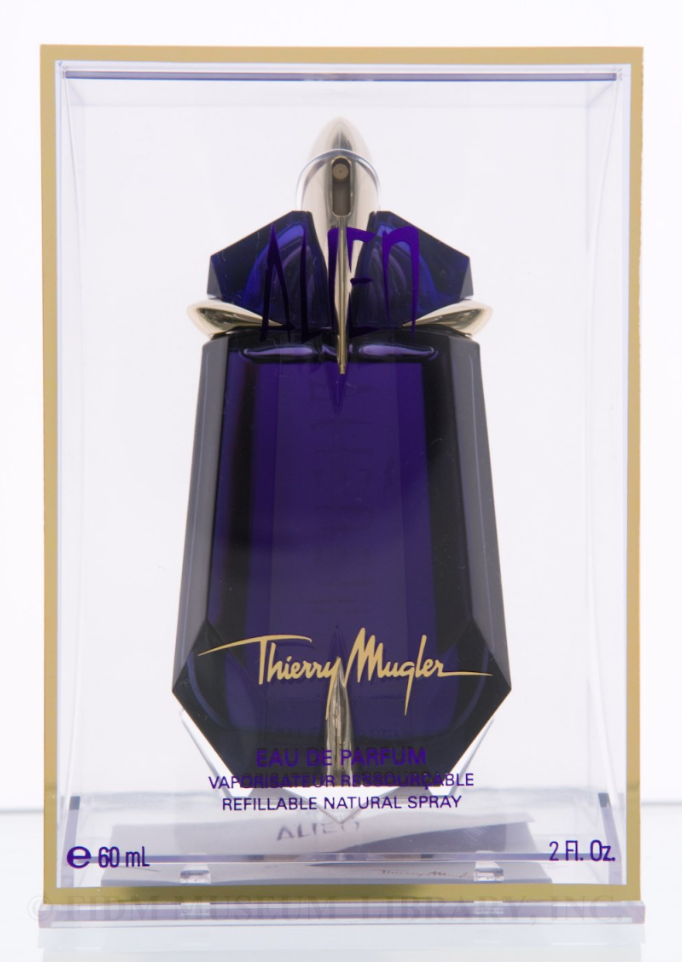 Thierry Mugler Alien Eau de Parfum, 2006 Glass, plastic, lucite FIDM Museum Purchase F2006.5.20A-D
Thierry Mugler Alien Eau de Parfum, 2006 Glass, plastic, lucite FIDM Museum Purchase F2006.5.20A-D
[1] “Announcing Pantone 18-3838 Ultra Violet, Pantone Color of the Year 2018,” Pantone.com, https://www.pantone.com/color-of-the-year-2018. [2] Ibid. [3] Ibid. [4] Annalisa Barbieri, “The Invention of the Color Purple,” The Guardian, March 12, 2015, https://www.theguardian.com/lifeandstyle/2015/mar/12/the-invention-of-the-colour-purple. [5] Regina Lee Blaszczyk, The Color Revolution (Cambridge: The MIT Press, 2012), 22. [6] Alexxa Gotthardt, “What Art History Tells Us about the Color of the Year,” Artsy.net, December 7, 2017, https://www.artsy.net/article/artsy-editorial-art-history-tells-ultra-violet-pantones-color-year. [7] Alison Matthews David, Fashion Victims: The Dangers of Dress Past and Present (London: Bloomsbury Visual Arts, 2015), 107. [8] Kassia St. Clair, The Secret Lives of Color (New York: Penguin Random House LLC, 2016), 170. [9] Gotthardt, “What Art History Tells Us…” [10] Ibid. [11] Vanessa Friedman, “The Future Is…Purple,” The New York Times, December 7, 2017, https://www.nytimes.com/2017/12/07/fashion/pantone-color-of-the-year-2018-ultraviolet.html [12] “Pantone Color of the Year 2018…”
